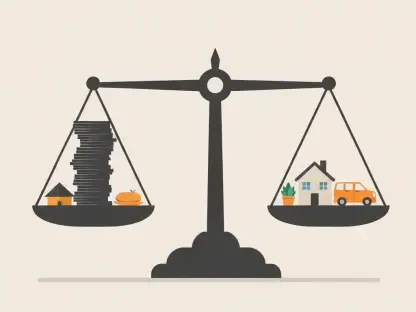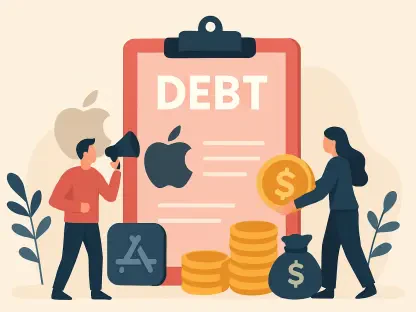The financial industry is undergoing a profound transformation, driven by the rise of Banking-as-a-Service (BaaS) platforms that are enhancing transparency and creating new revenue streams for traditional banks. In a landscape where fintech and digital banks are gaining traction, technologically adept legacy banks are leveraging BaaS to counteract competitive pressures and seize emerging opportunities. BaaS serves as an end-to-end model that empowers digital banks and third-party providers to integrate directly with banks’ systems. By adopting open banking principles and utilizing Application Programming Interfaces (APIs), these platforms are accelerating the shift towards a more interconnected financial ecosystem.
BaaS Platforms and Financial Transparency
Enabling Open Banking Through APIs
BaaS platforms are integral to the evolution of open banking, where banks open their APIs to third-party developers, facilitating the creation of innovative services. By allowing secure access to their systems, banks enable fintech firms to develop new products that can be seamlessly integrated into the existing banking ecosystem. This approach promotes financial transparency, as customers gain a clearer view of their financial landscape and can access a broader range of services tailored to their needs. For instance, fintech firms can offer personalized financial advice, budgeting tools, and other value-added services that enhance the customer experience.
In facilitating open banking, BaaS platforms act as a conduit for data sharing between banks and third-party providers, thereby enhancing transparency. This data sharing is governed by stringent regulatory frameworks that ensure consumer data is protected while allowing authorized entities to access and utilize the information. As a result, customers benefit from a more holistic view of their financial health, enabling them to make more informed decisions. Moreover, banks can leverage the data insights generated through these interactions to develop targeted offerings that better meet the needs of their clientele.
New Revenue Streams for Legacy Banks
The deployment of BaaS platforms offers legacy banks an avenue to participate in the burgeoning open banking space, generating new revenue streams in the process. By providing access to their APIs, banks can charge fintech firms and other third-party providers fees for each API call or for broader platform access. This model not only fosters collaboration between traditional and digital-first financial institutions but also diversifies banks’ income sources. Monthly subscription fees and a la carte service charges are common mechanisms through which banks can monetize their BaaS offerings.
Furthermore, BaaS platforms enable banks to expand their service offerings by partnering with fintech developers to create white-label banking solutions or branded financial products. These collaborative efforts can lead to the introduction of new services such as digital wallets, peer-to-peer payment systems, and personalized lending solutions, which can be offered under the legacy bank’s brand. This not only enhances the bank’s value proposition to its customers but also strengthens its competitive position in a rapidly evolving market. By embracing the BaaS model, legacy banks can pivot from traditional revenue generation methods and embrace a more diversified and resilient financial ecosystem.
Key Providers and Market Outlook
Top Players in the BaaS Industry
The BaaS industry is characterized by a mix of specialized fintech firms and retail banks that have embraced BaaS to augment their traditional offerings. Notable players in the purely BaaS-focused fintech category include solarisBank, Bankable, and ClearBank. These firms specialize in providing infrastructure and API solutions that enable other financial institutions to build and scale their services. On the other hand, retail banks with B2C operations such as Starling Bank, Fidor Bank, and BBVA have successfully integrated BaaS into their business models to expand their service portfolios.
These providers exemplify the potential of BaaS to revolutionize financial services by combining technical expertise with market reach. For instance, solarisBank offers a comprehensive suite of banking APIs, ranging from digital account management to compliance services, enabling fintech firms to launch their products quickly and efficiently. Similarly, BBVA has leveraged its BaaS platform to offer white-label banking solutions that cater to various customer segments, from individual consumers to small and medium enterprises. These collaborations underscore the symbiotic relationship between traditional banks and fintech innovators, driving the evolution of the financial ecosystem.
Future Prospects and Regulatory Trends
The financial industry is currently experiencing a significant transformation, largely due to the rise of Banking-as-a-Service (BaaS) platforms. These platforms are improving transparency and creating new revenue streams for traditional banks. As the fintech sector and digital banks continue to gain momentum, legacy banks with strong technological capabilities are using BaaS to address competitive pressures and capitalize on new opportunities. BaaS operates as a comprehensive model that enables digital banks and third-party providers to seamlessly integrate with traditional banks’ systems. By embracing open banking principles and utilizing Application Programming Interfaces (APIs), these platforms are hastening the transition toward a more interconnected financial ecosystem. This evolution fosters collaboration, innovation, and efficiency within the industry, enabling banks to offer better services to their customers. The growing adoption of BaaS represents a pivotal shift, driving the financial sector toward a future that values cooperation and advanced technological solutions.









